Your home may be the victim of extensive water damage due to storms or heavy rains. Leaks in the walls and floors can also arise due to a lack of maintenance, or even small holes you may not be aware of.
While extractors and pumps will solve most of these problems, there may be liquid hidden within the surfaces themselves. This article looks at why you should use a dehumidifier and how long you should run it after a water leak.
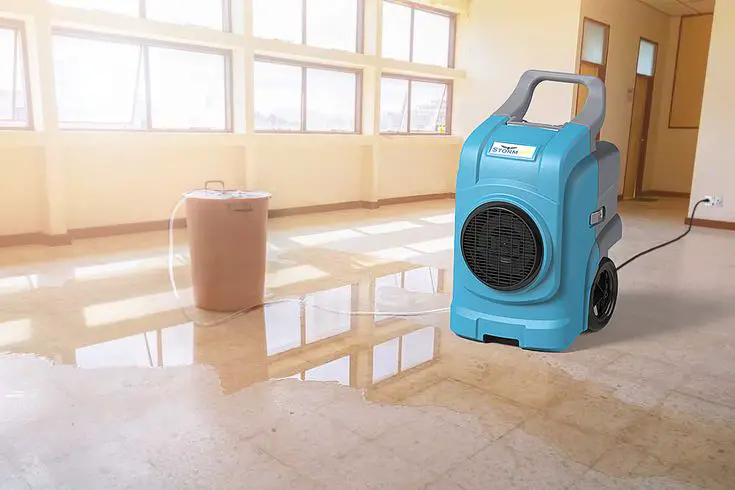
Photo credit: tidalwavega.com
Why Use a Dehumidifier After a Water Leak?
A water leak can cause severe damage to your property and assets if left unchecked. In this section, we'll look at why a dehumidifier is a perfect solution.
Removal of Moisture
Excess moisture in the air and on surfaces can lead to structural damage to your walls and floor. What’s more, it emits a terrible odor that’s unpleasant for your family and visitors alike. Dehumidifiers work to lower the water content in the air and your home, ensuring that water damage isn’t a problem for you.
Prevention of Mold and Mildew
One of the most significant issues with water leaks is that it causes mold and mildew to form. Once they grab hold in your home, they spread via spores and multiply in several locations where more moisture is available. Thanks to the dehumidifier’s action, you won’t have to worry about this problem, as the lack of water will kill them.
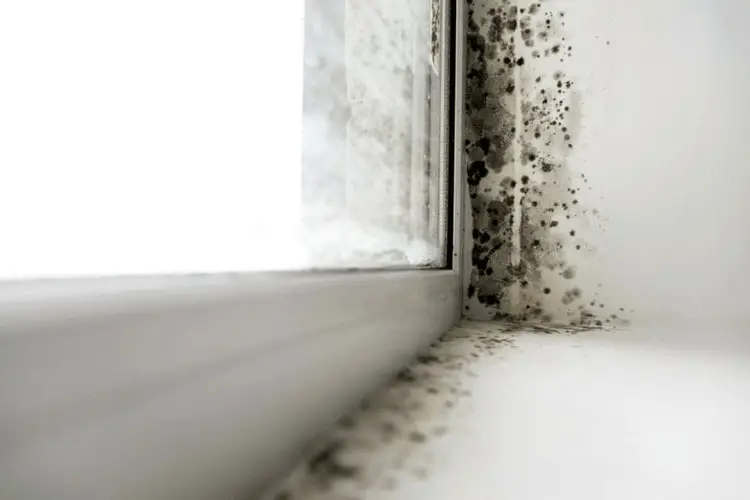


Photo credit: goldeagle.com
Provision of Dry Air
Besides the removal of water vapor from the air, dehumidifiers pump dry air back into the room. This process aids in drying the affected area quicker than if left alone, providing another measure against allergens and harmful bacteria.
How Long Do I Have to Run the Dehumidifier After a Water Leak?
Determining how long you need to run your dehumidifier depends on a few factors. You may need to hire a professional to assess the damage first, giving you a better indication of what you should do. Here’s what to consider before getting to work on those moist areas.
Affected Area’s Size
The length of time it will take to dry a water leak depends on how large the area is that’s affected. If there’s only minor damage, you’ll only run the dehumidifier for a few hours. However, more extensive corrosion will take longer to sort out, so you might need to extend it another day or two.
Humidity Level
In the summer seasons, the humidity levels are generally higher. Dehumidifiers work harder during this time to remove dense moisture from the air, which means they’ll need more time to sort out that water leak.
Damage Control
Some materials are less absorbent when it comes to water leaks. Prime examples include linoleum and concrete walls, floors, or ceilings. If carpets, wood, or drywall partitions are involved, you’ll need to run the dehumidifier for an extended period.
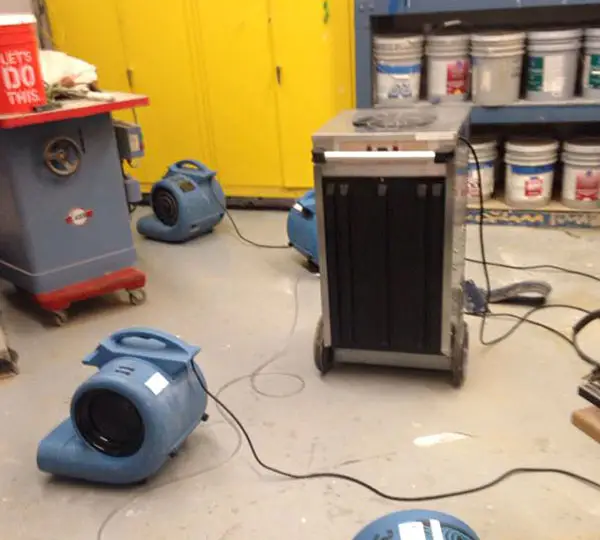


Photo credit: tscrestoration.com
Aspects to Consider Before Turning Off the Dehumidifier
You’ve run the dehumidifier through the day and night, and you’re impatient to let it rest. However, there are a few factors to look at before you switch it off.
Check the Remaining Humidity
If your area’s humidity is above 60%, turning off the dehumidifier is a bad idea. If it’s still between 50% and 60%, you might want to consider leaving it on during the day and switching it off at night. While the water leak might be resolved, there’s still too much moisture in the air.
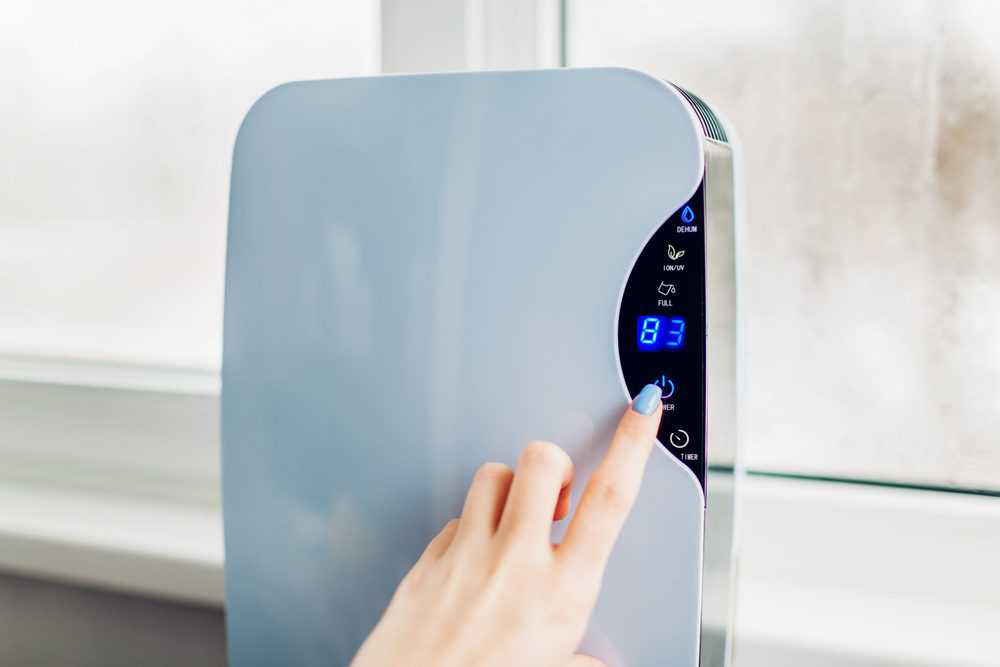


Ensure Proper Operation
The last thing you should do is turn off the dehumidifier if you plan to switch it back on moments later. The compressor needs time to cold down. If you turn it back on too quickly, you might overheat it and lower the unit’s lifespan. Always make 100% sure you’re ready to switch it off before you do.
Assess the Moisture Level
While the affected surface area may look dry, there’s an excellent chance that there’s still residual moisture hidden in the cracks. Before you’re ready to turn off the dehumidifier, ensure that you take a good look to see if there’s lingering wetness anywhere. It may help to ask a professional for advice, as the mildew and mold could grow back after a few weeks.
Conclusion
Dehumidifiers are excellent for drying water leaks and preventing damage to your home or rooms. Pumps and extractors can take care of the worst flooded areas, but you’ll need the care of dehumidifiers to resolve the moisture that you can’t see with the naked eye. Always take the right precautions, and don’t leave this unattended.
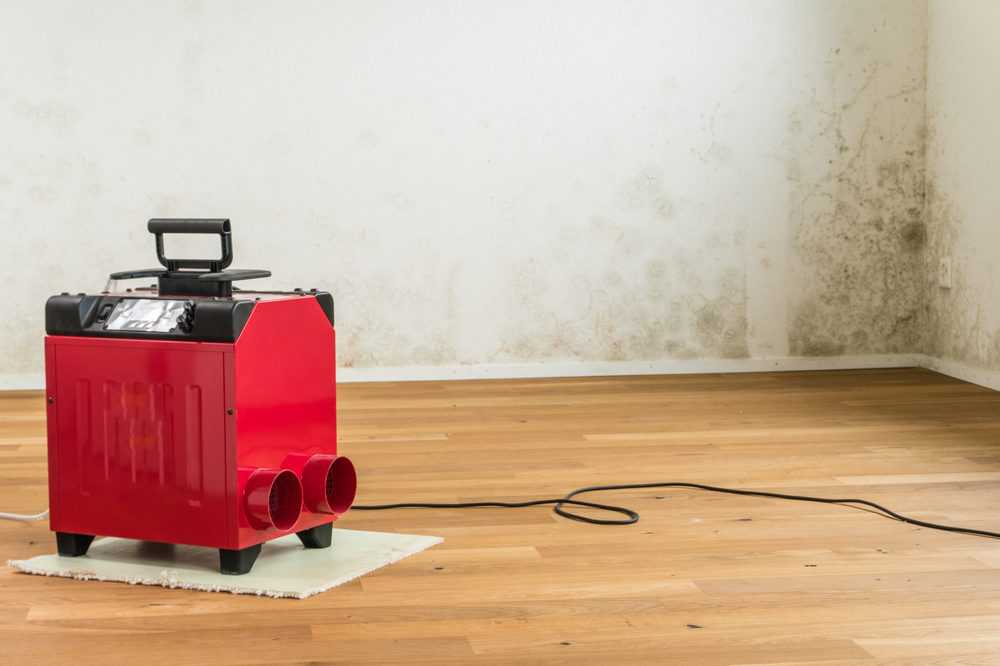


Photo credit: ohsospotless.com
People Also Ask
You may have some questions remaining after reading our article. Here are some FAQs for you to work through. If you have any other queries, please let us know.
How Fast Does Mold Grow After a Water Leak?
The air surrounding us contains microorganisms ready to grow into mold colonies once they find a suitable location. As soon as they locate enough moisture, they can develop within 24 to 48 hours, rising rapidly in wood and drywall. If left unchecked, they will continue to spread spores as long as the water remains.
Will a Dehumidifier Get Rid of Mold?
Yes, it will, as long as there are no other contributing factors aiding the mold’s growth. You can help the device by opening up as many windows and doors as possible if the humidity level is lower outside. Adding a few fans to help the drying process is another solution.
How Long Does a Water Leak Take to Dry Out?
It all depends on several factors, such as the affected area’s size, how deep the leak penetrated, the air’s humidity level, and the surface material. It can take just a few hours or as long as several days.



Photo credit: cooperator.com
Is it Safe to Run a Dehumidifier Constantly All the Time?
Yes, it is. However, there are a few aspects to consider. For instance, do you have to empty the water tank manually, or is there sufficient drainage? How much humidity is there in the air, and can you afford the electrical costs? Running the humidifier all the time will also cause wear on the machine, so ensure that you maintain it.
How Much Water Should a Dehumidifier Collect In a Day?
It all depends on the room size, humidity levels, and how much water is in the affected area. Typical dehumidifiers can collect between 10 to 20 liters per day. However, you can find industrial units capable of holding 50 liters daily.
How Dry is Dry Enough?
Experts consider moisture levels between 6% and 8% to be dry. You can use moisture readers to assess what the level is in your affected area.
To prevent mold development, you should also ensure that the humidity level is below 50%.
How Do I Know If the Dehumidifier is Working?
There are some elements you can have a look at to see if your dehumidifier is working. Firstly, the water tank should be filling up during operation. There should be dry air pushing out of the exhaust after the removal of moisture. Finally, have a look at the evaporator coils to ensure that they aren’t frozen
Other Related Content
Here is some other content that might interest you. :
